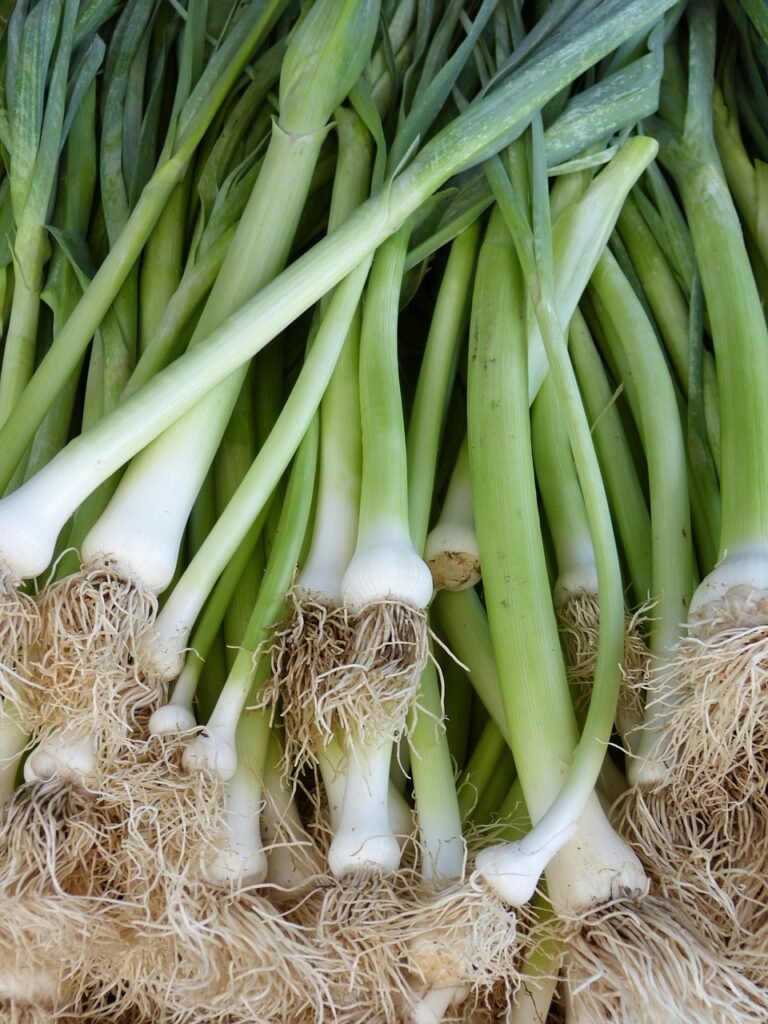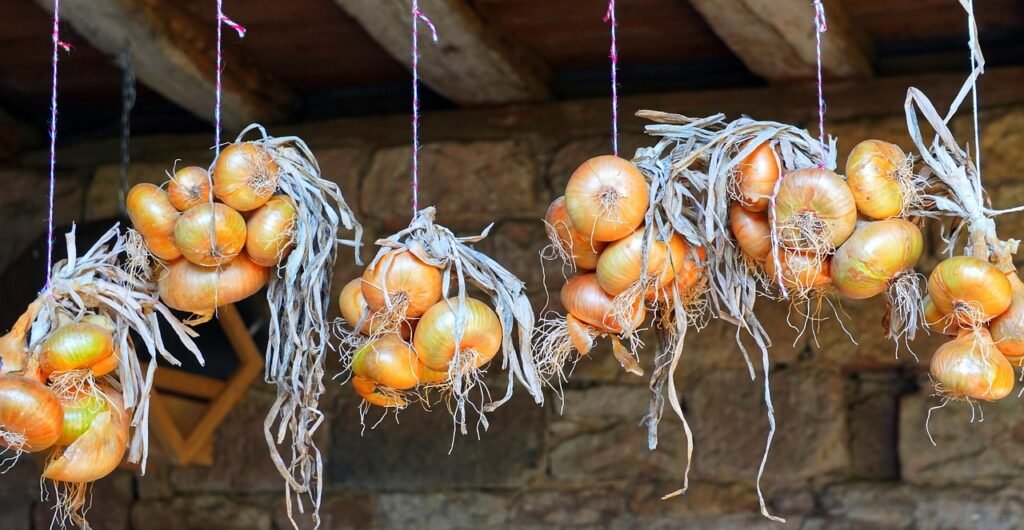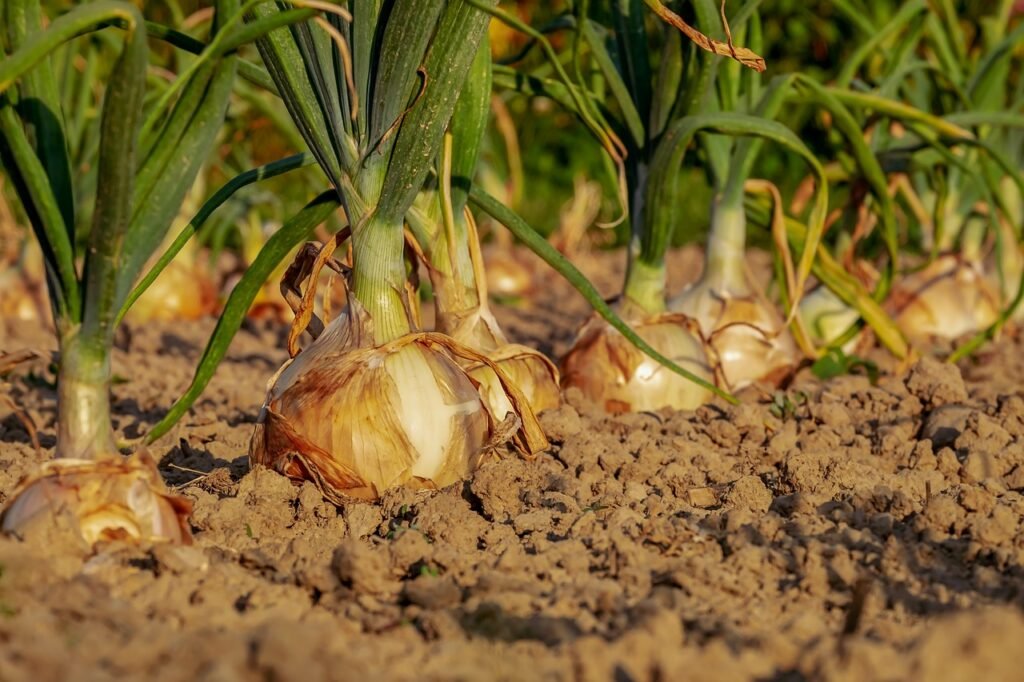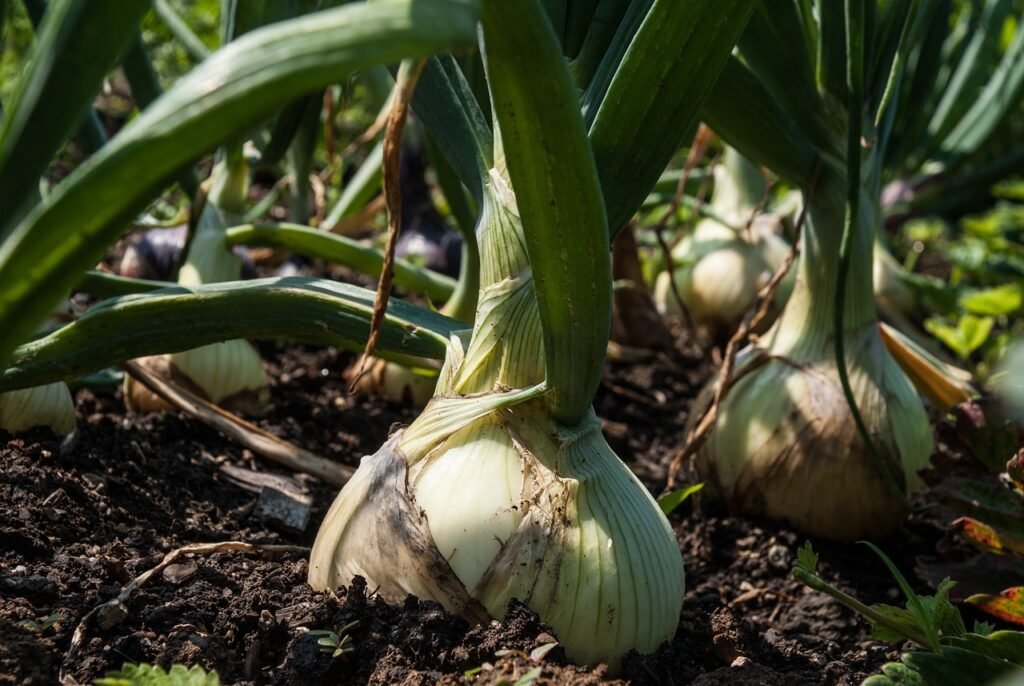Onions are a versatile and essential kitchen staple found in cuisines worldwide. Growing your own onions not only ensures a fresh supply but also provides numerous benefits, including cost savings, health advantages, and the satisfaction of harvesting your own produce. Whether you prefer bulb onions, green onions, or specialty varieties like shallots, this guide will walk you through the process of growing onions successfully in your garden.
Some of the links on this website may be affiliate links. If you purchase a product or service through these links, I may earn a small commission at no extra cost to you. I only recommend products or services that I have personally used and believe will add value to my readers. Thank you for your support!
Understanding Onion Varieties
Onions come in several types, each with unique characteristics and uses:
Bulb Onions: These include yellow, red, and white onions. Yellow onions are the most common and have a balanced flavor, while red onions are milder and sweeter, perfect for raw dishes. White onions have a sharper, more pungent taste.
Green Onions: Also known as scallions or spring onions, these are harvested for their green tops and small white bulbs.
Specialty Onions: Shallots have a milder flavor and are often used in gourmet cooking. They grow in clusters, similar to garlic.
Choosing the right onion variety depends on your climate and culinary preferences. For example, sweet onions like Vidalia thrive in warm climates, while storage onions such as Copra do well in cooler regions.

Preparing for Planting
Choosing the Right Location
Onions need at least 6 hours of direct sunlight daily. Select a garden spot with full sun exposure. The soil should be well-drained and fertile, with a pH between 6.0 and 7.0.
Preparing the Soil
-
Soil Testing: Conduct a soil test to determine pH and nutrient levels. Adjust the pH if necessary by adding lime (to raise pH) or sulfur (to lower pH). [Read More]
-
Soil Amendment: Enrich the soil with compost or well-rotted manure to enhance fertility. Ensure the soil is loose and well-drained to prevent waterlogging, which can lead to root rot.
Planting Onions
Starting from Seeds
Indoors: Start onion seeds indoors 8-10 weeks before the last frost date. Use seed trays filled with seed-starting mix and sow seeds ¼ inch deep. Keep the soil moist and place trays in a warm, sunny location.
Transplanting: When seedlings are about 4 inches tall and the threat of frost has passed, transplant them to the garden. Space them 4-6 inches apart in rows 12-18 inches apart.
Using Onion Sets
Onion sets are small, immature bulbs that can be planted directly in the garden. They are a convenient option for beginners.
- Planting: Plant onion sets 1 inch deep and 4-6 inches apart. Rows should be spaced 12-18 inches apart. Ensure the pointed end faces up.
Direct Seeding
In warmer climates, you can plant onion seeds directly in the garden.
- Seeding: Sow seeds ¼ inch deep and 1 inch apart. Thin seedlings to 4-6 inches apart once they are a few inches tall.
Onion Care and Maintenance
Watering
Onions require consistent moisture, especially during bulb formation. Water them regularly, ensuring the soil remains evenly moist but not waterlogged. Mulching with straw or grass clippings helps retain moisture and suppress weeds.
Fertilization
Timing: Fertilize onions every few weeks during the growing season. Use a balanced fertilizer (e.g., 10-10-10) or an organic alternative like fish emulsion.
Application: Apply fertilizer according to the package instructions, being careful not to over-fertilize, which can lead to excessive foliage growth at the expense of bulb development.
Weeding
Keep onion beds weed-free to reduce competition for nutrients and water. Mulching helps suppress weeds and maintain soil moisture.
Pest and Disease Management
Common Pests: Onion maggots and thrips are common pests. Use row covers to protect young plants and apply insecticidal soap or neem oil for control. [Read More]
Common Diseases: Downy mildew and neck rot can affect onions. Ensure good air circulation, avoid overhead watering, and practice crop rotation each year to prevent these diseases.
Thinning
Thinning is crucial for bulb development. Thin seedlings to 4-6 inches apart when they are a few inches tall. Use the thinned plants as green onions.
Harvesting Onions
When to Harvest
Onions are ready to harvest when the tops turn yellow and fall over. For green onions, harvest when the tops are 6-8 inches tall.

How to Harvest
Bulb Onions: Carefully lift onions with a garden fork, avoiding damage to the bulbs. Brush off excess soil and let them dry on the soil surface for a day or two.
Green Onions: Pull green onions by hand when they reach the desired size.
Curing and Storing
Curing: Lay onions in a single layer in a warm, dry, and well-ventilated area for 2-3 weeks. Alternatively, you can hang onions in bunches or mesh bags to cure. This process hardens the outer skin, extending storage life.
Storage: Store cured onions in a cool, dry, and dark place. Mesh bags or wooden crates work well for storage, ensuring good air circulation.
Troubleshooting Common Issues
Poor Growth
Poor growth can result from nutrient deficiencies, inadequate watering, or poor soil quality. Test soil and adjust fertilization and watering practices as needed.
Bulb Splitting
Bulb splitting can occur due to inconsistent watering or over-fertilization. Maintain even soil moisture and follow recommended fertilization guidelines.
Pests and Diseases
Onion Maggots: These larvae damage roots and bulbs. Rotate crops and use row covers to prevent infestation.
Downy Mildew: This fungal disease causes yellow spots and mold on leaves. Ensure proper spacing for good air circulation and avoid overhead watering.

Advanced Tips and Techniques
Companion Planting
Onions grow well with carrots, lettuce, and strawberries but should be kept away from beans and peas. Companion planting can help deter pests and improve growth.
Succession Planting
Stagger planting times every few weeks to ensure a continuous onion supply throughout the growing season.
Saving Seeds
To save onion seeds, allow some plants to flower and set seed. Harvest seeds when the flower heads dry out. Store seeds in a cool, dry place for future planting.
Growing onions at home is a rewarding experience that provides a fresh supply of this essential kitchen staple. By choosing the right variety, preparing the soil, and following proper planting and care techniques, you can enjoy a bountiful onion harvest. Whether you’re a seasoned gardener or a beginner, these tips will help you successfully grow onions in your garden.
Additional Resources
For further reading and learning, consider the following resources:
- Books: “The Vegetable Gardener’s Bible” by Edward C. Smith.
- Websites: The Old Farmer’s Almanac (www.almanac.com), and your local cooperative extension service.

